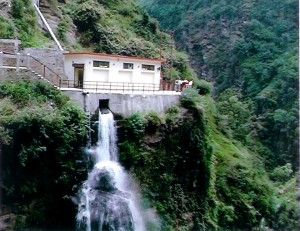Use and Capacity of Global Hydropower Increases
PRESS RELEASE
Worldwatch Institute
Contact: Supriya Kumar, [email protected], (+1) 202-452-1999, ext: 510
Use and Capacity of Global Hydropower Increases
Industrialized and developing countries continue to rely on their critical water resources as a renewable electricity source.
Washington, D.C.—-Global use of hydropower increased more than 5 percent between 2009 and 2010, according to new research published by the Worldwatch Institute for its Vital Signs Online publication. Hydropower use reached a record 3,427 terawatt-hours, or about 16.1 percent of global electricity consumption, by the end of 2010, continuing the rapid rate of increase experienced between 2003 and 2009.
The cost of hydropower is relatively low, making it a competitive source of renewable electricity. The average cost of electricity from a hydro plant larger than 10 megawatts is 3 to 5 U.S. cents per kilowatt-hour. Hydropower is also a flexible source of electricity since plants can be ramped up and down very quickly to adapt to changing energy demands. Yet there are many negative aspects associated with hydropower: for example, damming interrupts the flow of rivers and can harm local ecosystems, and building large dams and reservoirs often involves displacing people and wildlife and requires significant amounts of carbon-intensive cement.
“In the future, hydropower is likely to continue to grow—-despite the environmental challenges involved in expanding it—-because of its competitive price and climate benefits, which make it an attractive option as countries seek to lower their greenhouse gas emissions,” said report author Matt Lucky, a Worldwatch MAP Sustainable Energy Fellow.
China was the largest hydropower producer and is expected to continue to lead global hydro use in the coming years. The country produced 721 terawatt-hours in 2010, representing around 17 percent of domestic electricity use. China also had the highest installed hydropower capacity, with 213 gigawatts (GW) at the end of 2010. It added more hydro capacity than any other country, 16 GW in 2010, and plans to add 140 GW by 2015. This is equivalent to building about seven more dams the size of China’s Three Gorges Dam, currently the largest in the world.
“While hydropower energy production helps reduce reliance on fossil fuels and avoids much of their carbon dioxide emissions, this form of electricity generation is rarely without social and environmental cost and risk,” said Worldwatch President Robert Engelman. “Hydropower is indeed low-carbon renewable energy, but new hydro development nonetheless needs to pass rigorous tests for its environmental and social impacts.”
Hydropower is produced in at least 150 countries but is concentrated in just a few countries and regions. The Asia-Pacific region generated roughly 32 percent of global hydropower in 2010. Africa produces the least hydropower, accounting for 3 percent of the world total, but is considered the region with the greatest potential for increased production.
In 2008, four countries—-Albania, Bhutan, Lesotho, and Paraguay—-generated all their electricity from hydropower, and 15 countries generated at least 90 percent of their electricity from hydro. Iceland, New Zealand, and Norway produce the most hydropower per capita.
Micro-hydropower, which is defined as a plant with an installed capacity of 100 kilowatt-hour (kWh) or less, has grown in importance over the last decade and can be an effective means of providing electricity to communities far from industrial centers. As of 2009, roughly 60 GW of small hydro was installed worldwide, accounting for less than 6 percent of the hydropower total. Small hydro is likely to expand, especially as populous countries like India continue to pursue rural electrification.
Further highlights from the study:
Five countries—-China, Brazil, the United States, Canada, and Russia—-accounted for approximately 52 percent of the world’s installed hydropower capacity in 2010.
There are now three hydropower plants larger than 10 GW: the Three Gorges Dam in China, Itaipu Hydroelectricity Power Plant in Brazil, and Guri Dam in Venezuela.
A total of $40-45 billion was invested in large hydropower projects worldwide in 2010.
###
Notes to Journalists: For a complimentary copy of this trend, please contact Supriya Kumar at [email protected].
About the Worldwatch Institute:
Worldwatch is an independent research organization based in Washington, D.C. that works on energy, resource, and environmental issues. The Institute’s State of the World report is published annually in more than 20 languages. For more information, visit www.worldwatch.org.
# # #
Forward email
This email was sent to [email protected] by [email protected] |
Update Profile/Email Address | Instant removal with SafeUnsubscribe™ | Privacy Policy.
Worldwatch Institute | 1776 Massachusetts Ave NW | Washington | DC | 20036
loading...
loading...
Tags: green energy design, micro power




Voices of our community